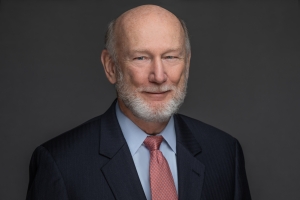
MORGAN STORY OFFERS INSIGHT INTO HERO FUND INVESTIGATIONS, COMMON QUESTIONS
In this issue of Impulse, Editor Jewels Phraner takes you on a deep dive into the 1916 Cleveland Waterworks Tunnel Disaster which killed 21 and injured others. Phraner, a veteran journalist, describes the disaster, the rescues, and the Hero Fund’s subsequent investigation. To make its awards decision, the Hero Fund had to understand the role of every victim, rescuer, and bystander in order to identify who might qualify for the Carnegie Medal. All that work identified 22 candidates, from whom four were finally selected as Carnegie heroes. Phraner’s article is the most detailed description you will find of a Hero Fund case investigation and the complications involved in the work.
Phraner took on the Cleveland Waterworks case, and we are publishing it here, because it is the source of one of the very few controversies related to an awarding decision by the Hero Fund, and certainly the oldest, and most public. Among the 18 men investigated who did not receive the Carnegie Medal were two Black brothers, Garrett and Frank Morgan. Garrett was a businessman and inventor of some note. Phraner fully describes the brothers’ admirable role in the affair and why they and the rest of the 18 were not awarded the Medal. Over the years, though, the opinion has been voiced in various publications that the Hero Fund denied the Morgan brothers, and Garrett in particular, because they were Black. Phraner deals with that nicely in her piece. She describes the Hero Fund’s record of awarding the Carnegie Medal to Black Americans and Canadians from our earliest days, years before Cleveland Waterworks, exactly as Andrew Carnegie explicitly directed. Why would we suspend our normal practice and arbitrarily deny the Morgans because of their race? But her most important point is the logic of the investigation and the case analysis. We face the same issues today and decide them in the same way. The Morgan issue aside, Phraner’s analysis of Cleveland Waterworks is a great way to understand the entirety of the Hero Fund’s work across 116 years and 10,000+ Carnegie Medals. The Morgan decision is a consistent and coherent part of that body of work.
Let me give you a specific example: The key issue for Garrett Morgan was whether his smoke hood reduced his risk below the “extraordinary” benchmark. (Morgan, after all, designed and marketed his smoke hood specifically to reduce risk.) We commonly see rescues in which a rescuer uses some aid or apparatus. A surf rescuer might use a boogie board or surfboard. Was that still risky enough? We look at wind, currents, waves, water temperature, and resistance by the victim to decide. The case might come out one way or another, but the use of an apparatus is always a factor in the decision. In a more obvious case, the use of a well-designed, powered surf rescue boat would almost certainly rule out an award … unless you need to get close to the edge of a dam or waterfall! You can see that Garrett Morgan’s smoke hood falls along a spectrum of aids or apparatuses we consider all the time. For some of the other non-awardees in Cleveland Waterworks the issue was their knowledge of the risk they faced. Again, this an issue we still deal with in cases today. So, as I said, Phraner’s article goes beyond the specifics of the Morgans to serve as an excellent description of how our staff does its work and deals with the issues involved.
I do have a personal race-related confession to make. I own a throw pillow decorated with a semi-famous 1906 photograph of Andrew Carnegie and Booker T. Washington. (Carnegie was an admirer of Washington and significant donor to his Tuskegee Institute.) Am I guilty of Carnegie Kitsch, Tuskegee Kitsch, or both? Maybe, but my conscience is clear on this most serious point: the Hero Fund in its every decision strives to live up to Andrew Carnegie’s direction that “The Hero Fund is to become the recognized agency, watching, applauding, and supporting where support is needed, heroic action wherever displayed and by whomever displayed — White or Black, Male or Female — or at least this is my hope.” I think we have made that hope real. Carnegie would be very proud of Rudell Stitch (he won the Medal twice), Vickie Tillman (our 10,000th winner), and every one of the Black Canadians and Americans who received the Medal that bears his name.

